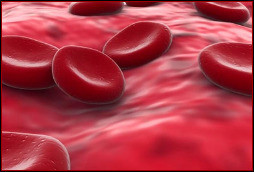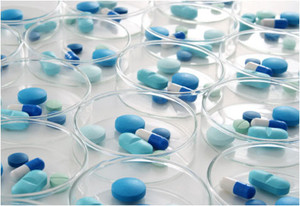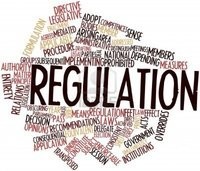On 7 October 2013, the European Medicines Agency (EMA) announced the publication of a draft reflection paper‡ to discuss the data requirements for intravenous iron-based nano-colloidal products developed with reference to an innovator medicine. The draft reflection paper has been released for a five-month consultation period.
EMA issues draft reflection paper for iron-based nano-colloidal products
Home/Guidelines
|
Posted 18/10/2013
 0
Post your comment
0
Post your comment

The draft reflection paper is intended to guide companies in generating relevant comparative quality, non-clinical and pharmacokinetic data to support a marketing authorization for an intravenous iron-based nano-colloidal product claiming to be similar to another one already on the market.
Iron-based products are used to treat iron deficiency. They consist of a polynuclear iron core, generally present in the iron (III)-oxyhydroxide form, stabilized by a complex carbohydrate coating which leads to nano-sized colloidal aggregates.
For the comparison of iron-based nano-sized colloidal products developed with reference to an innovator medicinal product, current scientific knowledge and regulatory experience for characterization of nano-sized colloidal preparations indicate that quality characterization on its own would not provide sufficient assurance of the similarity between the two products, even if the quality tests performed show similarity. Therefore, EMA is proposing in this reflection paper that for the comparison of such iron-based colloidal products, data from quality, non-clinical and human pharmacokinetic studies is required.
The reflection paper released for consultation is one of a number of reflection papers on nanomedicines, which EMA’s Committee for Medicinal Products for Human Use (CHMP) has been developing since 2011 to provide guidance to sponsors developing medicines in this emerging scientific area.
EMA is hoping that this document will facilitate a decision on the following issues:
- pharmaceutical data needed as evidence of product similarity between test and reference products to support comparative safety and efficacy
- consideration to the types of non-clinical and clinical studies that are required to support the quality data in order to demonstrate similarity
Reflection paper on the data requirements for intravenous iron-based nano-colloidal products developed with reference to an innovator medicinal product
Date: 25 July 2013
End of consultation: 28 February 2014
www.ema.europa.eu/docs/en_GB/document_library/Scientific_guideline/2013/09/WC500149496.pdf
Feedback on the draft reflection paper can be submitted to swp-h@ema.europa.eu until the 28 February 2014.
‡ Reflection paper
A reflection paper is developed to communicate the current status of discussions or to invite comment on a selected area of medicinal product development or a specific topic. It can provide a framework for discussion or clarification, particularly in areas where scientific knowledge is quickly evolving or experience is limited. A reflection paper does not provide direct scientific, technical or regulatory guidance, but may contribute to future development of such guidelines or related documents, as it provides clear statements on current expectations from the regulator. Therefore, it becomes possible for researchers to define the potential weak or controversial points and further clarify these with the regulators.
Related articles
EU guidelines for nanosimilars
Permission granted to reproduce for personal and non-commercial use only. All other reproduction, copy or reprinting of all or part of any ‘Content’ found on this website is strictly prohibited without the prior consent of the publisher. Contact the publisher to obtain permission before redistributing.
Copyright – Unless otherwise stated all contents of this website are © 2013 Pro Pharma Communications International. All Rights Reserved.
Source: EMA
Policies & Legislation
ANVISA tackles 24-month backlog in biologicals post-registration petitions
US EO: delivering Most-Favored-Nation Prescription Drug Pricing to American patients
Most viewed articles
The best selling biotechnology drugs of 2008: the next biosimilars targets
Global biosimilars guideline development – EGA’s perspective
New guidance for biologicals in Pakistan and Hong Kong’s independent drug regulatory authority

Home/Guidelines Posted 20/10/2025
Canada poised to remove requirement for Phase III trials for biosimilars

Home/Guidelines Posted 22/07/2025
The best selling biotechnology drugs of 2008: the next biosimilars targets








Post your comment